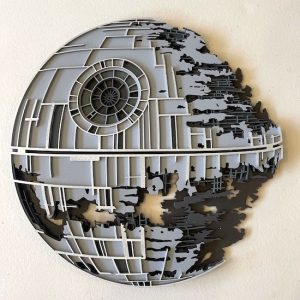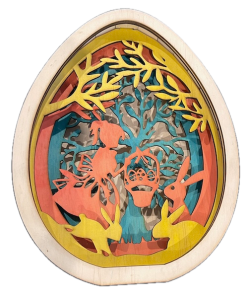 Introduction
Introduction
Laser cutting has become essential for makers, hobbyists, and businesses looking to create precise and intricate designs. Laser cutting offers endless possibilities, whether you want to craft custom gifts, start a small business, or explore creative projects. This guide will walk you through the basics of laser cutting, how it works, the materials you can use, and tips for getting started.
What is Laser Cutting?
Laser cutting is a technology that uses a high-powered laser beam to cut or engrave materials with extreme precision. The laser vaporises, melts, or burns the material, leaving a clean and accurate cut. This method is widely used in manufacturing, jewellery making, and DIY crafting industries.
How Does a Laser Cutter Work?
A laser cutter operates by directing a focused laser beam onto a material. The process involves:
- Generating the Laser Beam – A high-intensity beam produces a CO2, fibre, or diode laser.
- Focusing the Beam – Lenses concentrate the beam to a fine point for accurate cutting or engraving.
- Cutting or Engraving – The material is heated, vaporised, or burned depending on the laser’s power and speed settings.
- Controlled Movement – CNC (Computer Numerical Control) technology guides the laser to follow the design’s path.
Types of Laser Cutters
There are several types of laser cutters, each suited for different materials and applications:
- CO2 Lasers – Best for wood, acrylic, fabric, leather, and glass engraving.
- Fiber Lasers – Ideal for cutting metals like stainless steel and aluminium.
- Diode Lasers – Suitable for light-duty engraving on wood, plastic, and soft metals.
Choosing the Right Laser Cutter for Beginners
When selecting a laser cutter, consider the following factors:
- Power & Speed – Higher wattage provides faster and deeper cuts.
- Work Area Size – Ensure it fits the size of your intended projects.
- Software Compatibility – Look for machines that support standard design software like Adobe Illustrator, CorelDRAW, or LightBurn.
- Budget – Entry-level machines like the xTool D1 or Glowforge Basic are great for beginners.
Materials You Can Cut and Engrave
A laser cutter can process various materials, including:
- Wood (plywood, MDF, hardwood)
- Acrylic (cast acrylic for better engraving results)
- Leather (for wallets, keychains, and accessories)
- Paper & Cardboard (for prototypes and packaging)
- Fabric (cotton, felt, and polyester)
- Metal (requires a fibre laser or CO2 with marking spray)
Safety Tips for Laser Cutting
Laser cutting is powerful, but safety precautions are necessary:
- Wear safety glasses – which protect your eyes from laser reflections.
- Ensure Proper Ventilation – Use an exhaust system to remove fumes.
- Avoid Flammable Materials – Do not use PVC or other toxic plastics.
- Follow Manufacturer Guidelines – Always adhere to recommended power and speed settings.
Best Software for Laser Cutting
To create your designs, you’ll need software that converts images into laser-cuttable files:
- LightBurn – Popular for its compatibility with most laser cutters.
- Adobe Illustrator – Great for vector design and engraving.
- CorelDRAW – Another vector design option for professional results.
- Inkscape – A free alternative for beginners.
Getting Started with Your First Project
To begin your laser cutting journey, follow these steps:
- Choose a Simple Design – Start with an easy engraving or basic cut.
- Prepare Your Material – Secure it on the laser bed properly.
- Adjust Laser Settings – Set the appropriate power, speed, and focus.
- Run a Test Cut – Test on a scrap piece before finalising.
- Execute Your Project – Watch the process and ensure safety measures are in place.
 Conclusion
Conclusion
Laser cutting is an exciting and versatile technology that opens up creative possibilities. You can begin crafting stunning designs and functional projects by understanding the basics, choosing the right equipment, and following safety guidelines. Whether for personal use or business, mastering laser cutting can be a rewarding skill that enhances your creative potential. I hope you enjoyed the Laser Cutting Guide.
Checkout CNET’s Best Laser Cutters and Engravers of 2025, and my collection of laser cutting projects.
 Introduction
Introduction Conclusion
Conclusion